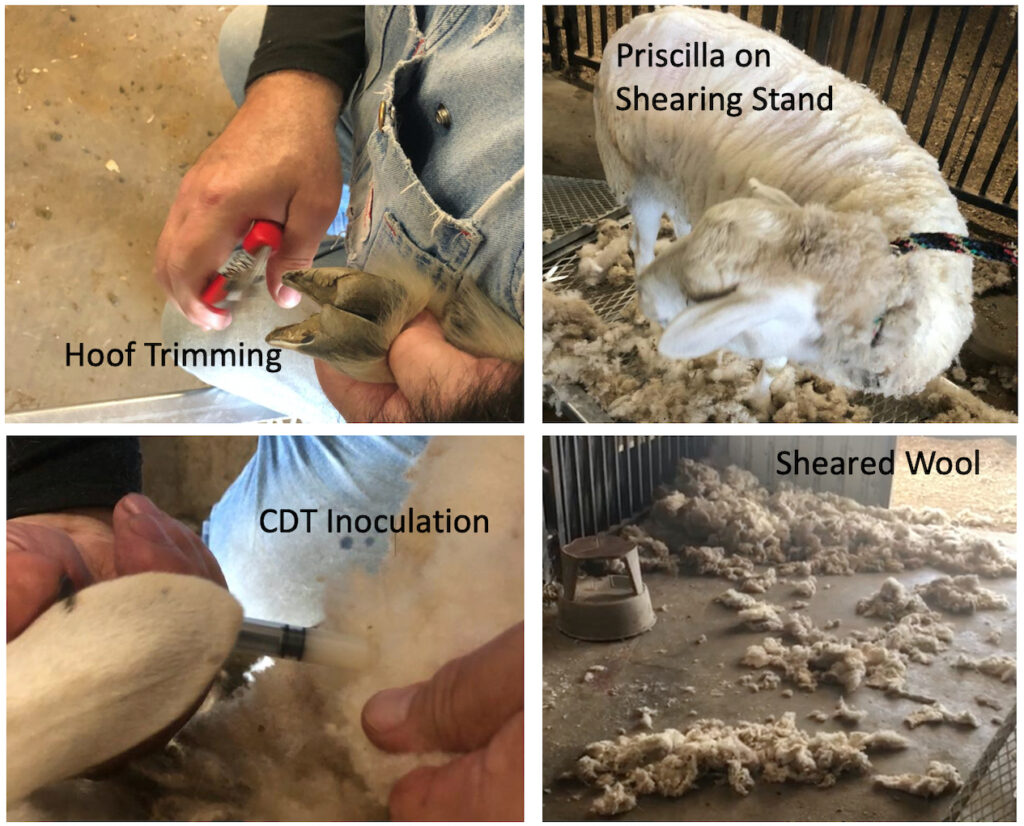It was a perfect day mid-May that we decided it was the right time to shear the sheep at Lucky Glider Rescue & Sanctuary. It’s important to remove the “winter coats” of the sheep because they can easily overheat in the dog days of a Central Texas summer. Some of the sheep here are of the Dorper kind and so produce a thick layer of proper wool. Half are Painted Desert sheep so their fiber is more like hair with some down mixed in.
Optimal conditions:
1) no rain;
2) not too hot;
3) plenty of shade; and
4) indoor access to electricity and a fan.
1) no rain;
2) not too hot;
3) plenty of shade; and
4) indoor access to electricity and a fan.
Many people ask if we sell the wool, but alas it is too dirty and matted to make the grade for any commercial use. More notable, although we’ve been doing this for a decade, we are not too expert at shearing off wool in nice, evenly-cut fleeces. So we end up with a big pile of wool that is destined for the trash. It’s more about the animals’ comfort versus selling wool. You’d think that after years of shearing these critters we’d get better at it but it’s a lot harder than it looks…
Owing to our getting older now and a bit rickety, it’s a lot easier to set up a grooming stand with a ramp and stanchion than to grovel with the sheep on the ground. It’s much easier (considering how long it takes) to run them up the ramp, tie them to the stanchion and have one person hold them steady while the other does the shearing. At least that’s what works for us. Sometimes a sheep will jump down off the ramp and we’ll have to do a lot of bending and kneeling to finish the job, but that hurts down to the bones the day after!
The first step to getting ready for this special day is to coax the animals into the barn and feed them as a distraction to running around the other side to then close the corral gate and barn door to trap them inside. Second, we position the shearing stand just outside one of the stalls they inevitably congregate in.
We then set up a folding table for all of the miscellaneous gear. This includes wormer formula (administered orally with a syringe), inoculation (CDT) and needles in a styrofoam container with ice in it. The ice keeps the medicine cool so it does not degrade throughout the day. On the same table, we set up the shearing gear, spare cutters and combs, oil to keep the trimmer lubed-up and of course the hoof-trimming shears.
So all at once the sheep get de-wormed, inoculated, sheared, and then their hooves are trimmed. With a few breaks for drinking water and bandaging cut fingers, it takes the bulk of the day…
The trick to shearing effectively is to get the comb part of the business end of the clippers down close to the skin. That’s where the wool is easiest to cut. You have to be careful to keep the comb and cutters at the correct angle, almost completely horizontal to the skin, or else you can cut the sheep easily. Their skin can bunch up and easily get caught up in the cutter blade so it’s best to pull their skin taught in certain areas.
We usually start up by the neck and run the clippers down towards the tail along the backbone. Once you have a good strip down the middle, it is easy to then do that again on either side. Then, we usually go vertically down their sides and legs from that vantage point. You often have to stop shearing just to talk to the animal and keep them calm. Of course this is not the traditional way to do it. Experts will flip the sheep on their backs and bend over to do all the shearing. Arthritis gets in the way of that more perfect method!
As each member of the herd is groomed, dewormed, inoculated and trimmed, we lead them out of the barn door to the outside. This makes it easier to cull out the others for their treatment because they have a tendency to bunch up as you go fetch them.
At the end of the day, we had a huge pile of dirty wool (see thumbnail) and a plain sense of relief and satisfaction that these sweet animals will be ready for the hot part of the summer.

